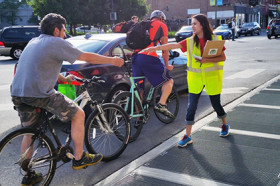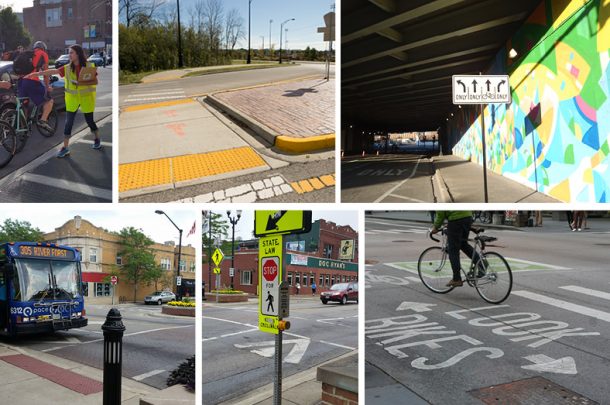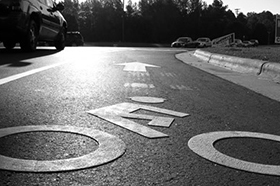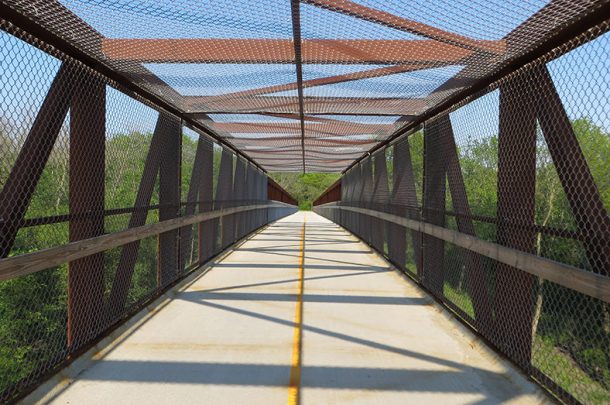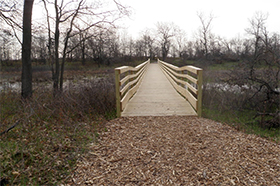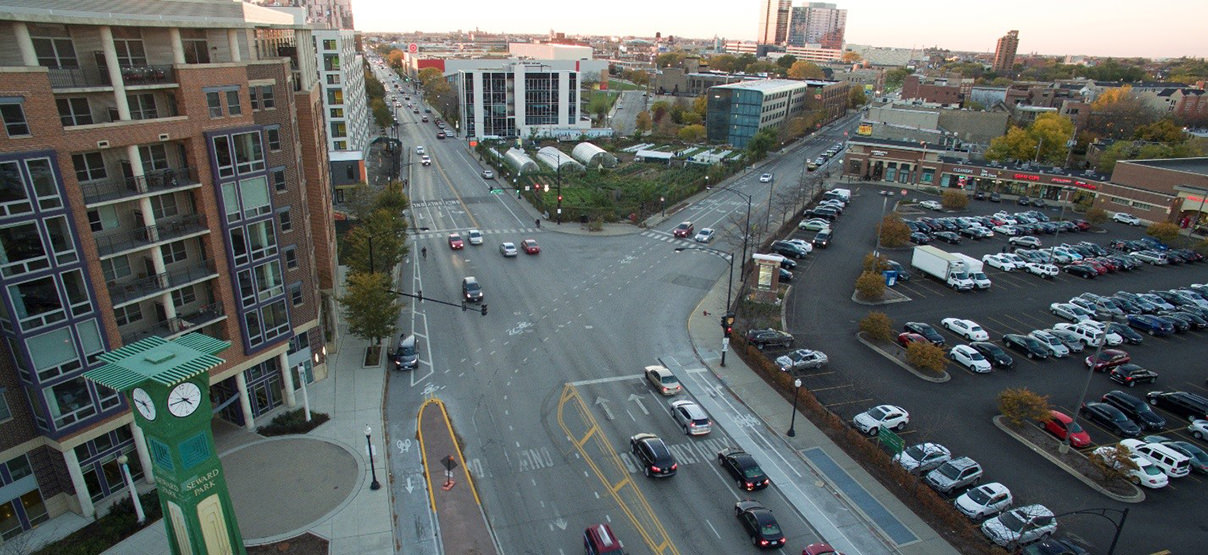
Individuals today are driving fewer miles and utilizing alternative forms of transportation more frequently. With this change in roadway usage, state and local agencies are seeking ways to improve safety for those traveling on foot, bicycle and public transit. This article is the second in a series of six that will introduce and explore different methods to providing safer and better designed and connected bicycling and walking networks. For more detailed information on our full-service pedestrian and bicycle service offering please contact our experts Scott VanDerAaa or Frank Zurek.
Primera’s first article in the series, “Rolling out Separated Bike Lanes” examined the benefits and challenges of Separated Bike Lanes (SBLs). While SBLs reduce the overall crash rate, they can sometimes increase the percentage of crashes occurring at intersections. In Chicago, a crash analysis performed by Primera found the percentage of motorist-bicyclist crashes at intersections increasing from 66.3% before installation to 73.2% after installation (the analysis was completed utilizing bicycle counts to account for ridership trends and crashes over a five-to-six-year period). As mentioned in our first article, the barrier separation in SBLs introduces blocked sightlines where a turning motorist may not see the cyclist traveling through the intersection, possibly contributing to the increase in the percentage of crashes occurring at intersections.
In addition to the safety challenges of crossing an intersection, there are operational challenges that must be addressed by providing bicyclists a clear, direct path and a comfortable crossing. Most SBLs are installed on the right side of the roadway, in the same direction as motoring traffic. This requires special attention at intersections as a conflict point exists where the right turning motorist crosses the path of the bicyclist or merges in the same lane with them. However, SBLs can also be installed bi-directionally or against the flow of traffic on one-way streets, requiring designs that provide a way for bicyclists to make turns, or control traffic flow with specialized bicycle signal heads.
Therefore, intersection markings strive to achieve three goals:
- Increase safety and reduce crashes at intersections by increasing motorist yielding rates and reducing motorist speed.
- Increase bicyclist comfort by maintaining separation from motorists and providing an environment that encourages sharing of the road.
- Provide a clear path through the intersection so that bicyclists know where to position themselves for adequate exposure and routing, and motorists can more easily see the bicyclist and know where to expect them.
Several design features are available to achieve these goals, each with its own strengths and challenges. They include bicycle boxes, two-stage turn boxes, intersection crossing markings, mixing zones, and lateral shifts.
Bicycle Boxes
A bicycle box, or advanced stop line, is a designated area for bicyclists at the head of a traffic lane at a signalized intersection. Motorists are required to stop behind the near stop line while bicyclists may stop at the far stop line. This provides bicyclists an opportunity to queue and proceed ahead of motoring traffic, providing various safety and comfort benefits.

Two-Stage Turn Boxes
Two-stage turn boxes provide a designated area for bicyclists to make a safe, comfortable left turn from a right-side bicycle lane or cycle track, or a right turn from a left-side bicycle lane or cycle track, through a multi-lane signalized intersection. The turning maneuver required is known as a Copenhagen Left or a Jug Handle turn. To use, bicyclists ride into the intersection, stop in the turn box, orientate their bicycle in the direction of cross traffic, and wait for the cross street signal to turn green before continuing. They are useful for bicyclists unaccustomed to making left turns through heavy traffic.

Intersection Crossing Markings
Bicycle pavement markings crossing through an intersection define the intended path of bicyclists, and provide a boundary between bicyclists and motorists within the intersection. They help guide bicyclists through intersections and provide a continuation of a bicycle lane. Intersection crossing markings reinforce bicyclist right of way and alert turning motorists in either direction to expect and look for bicyclists travelling through the intersection. Furthermore, by defining a path, bicyclists are encouraged to travel in a more predictable manner.

Lateral Shifts
Lateral shifts, also called through bicycle lanes, include the shifting of turning motorists across a conventional or buffered bicycle lane in advance of the intersection. The bicycle lane then continues in a dedicated through lane adjacent to the turn lane. Bicyclists can continue straight through the intersection or merge into the turn lane. There are a variety of options for marking the shift and weave area

Mixing Zone
A mixing zone, also known as a combined bicycle lane / turn lane, is a tool for creating a shared use space between bicyclists and turning motorists when approaching an intersection. The mixing zone is a dedicated turn lane with shared lane markings or a skip-dash lane line. The markings instruct through bicyclists on the best lane usage and positioning while alerting the motorist to expect and look for bicyclists in the lane. Proper lane positioning helps reduce right hook crashes where a right-turning motorist collides with a bicyclist who is passing on the right.

If you have any questions about Bicycle Intersection Markings or your next pedestrian and bicycle project, let Primera help! Please feel free to contact our experts Scott or Frank.
Stay tuned for our next featured article in the series where we will look at Policy and Guidelines.



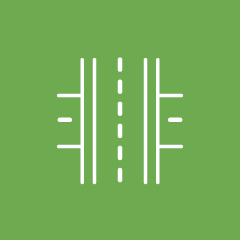



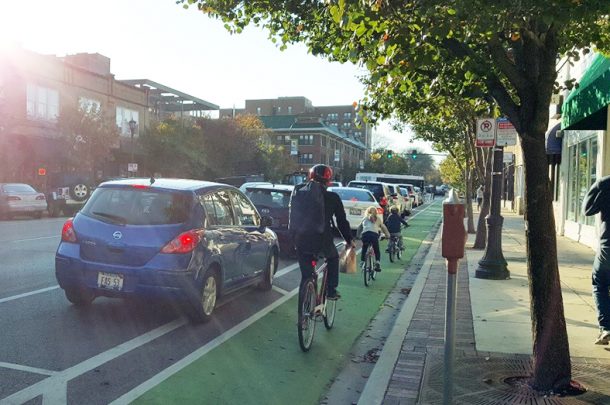
 Rolling out Separated Bike Lanes
Rolling out Separated Bike Lanes 
